April 11, 2021 — the San Jose Sharks sit just four points back from the Arizona Coyotes and the coveted fourth playoff spot with a game in hand on their rival. After a trade deadline with little player movement within the club, the Sharks looked toward a possible playoff push.
And, as you can tell from the title above, the Sharks were unable to qualify for the postseason. Currently, San Jose holds a 20-26-6 record and since April 10 the team has won just two of their last 13. With an overtime loss to the Colorado Avalanche, largely aided by missed saves from Martin Jones, the team is officially out of postseason contention.
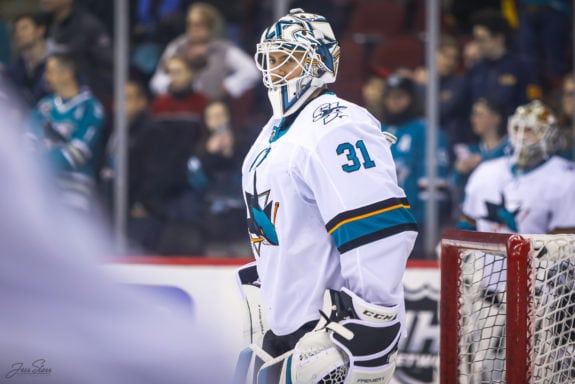
So, what happens now? The Sharks will have a busy offseason ahead. Key restricted free agents such as Rudolfs Balcers and Ryan Donato will need extension. I would also assume Alexander Barabanov’s five points in five games will warrant an extension, but he is an unrestricted free agent. San Jose will also lose a player to the Seattle Expansion Draft.
However, I think it’s important to look at the last three years of the club and analyze where the Sharks went wrong. In the team’s 30-year history, this marks the third time in franchise history they’ve missed consecutive postseasons. So, before trade rumors, mock drafts, and Seattle Expansion ideas, let’s look at what went wrong in San Jose the last two seasons.
Lacking a Quality Top-6 and Offensively Gifted Third Center
In the 2018-19 season, the Sharks had offensive talent in spades. The top six often consisted of Evander Kane, Tomas Hertl, Timo Meier, Joe Pavelski, Logan Couture, and Joonas Donskoi, who was upgraded to Gustav Nyquist at the trade deadline.
Last season, the top six, who were often not together due to injury or poor play consisted of Couture, Hertl, Meier, Kane, Kevin Labanc, and any of Lean Bergman, Patrick Marleau, or Noah Gregor. This group was much more inconsistent than the previous group, and lacked the same offensive talent. For reference, the best forward in scoring both seasons was Hertl, but in 2018-19 his points-per-game rate was .96, and in 2019-20 it was .75.
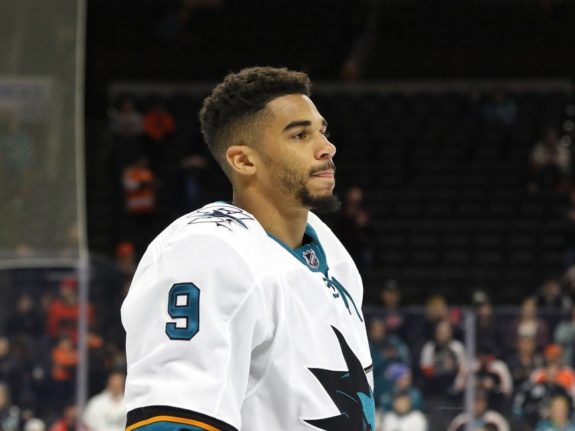
The Sharks’ 2020-21 top six has been nothing short of a revolving door. The group for the majority of the season looks like Kane, Couture, Hertl, Labanc, Meier, and a random selection of John Leonard, Donato, Marleau, Balcers, and now Barabanov. Hertl and Kane have been quality this season, with both having scoring rates over .8 points per game. After them, however, the forward group has been nothing short of disappointing. The next highest scoring forward is Couture, who has just .6 points-per-game, despite an incredible start to the season.
The top six the Sharks rolled the last two seasons was not worthy of a playoff spot. Most Stanley Cup contenders have at least one, if not multiple forwards that score near a point-per-game pace. While Hertl has hit that threshold before, and currently has 12 points in his last 10 games, he does not have any outstanding wingers to elevate him to that elite scoring level for long periods of time.
And, if the lack of scoring was not enough, the Sharks lacked a quality third-line center the last two seasons to really elevate the offense of the bottom six forward group. Joe Thornton had a bounce-back season in 2018-19, which led to the team having a super quality third line and received depth scoring.
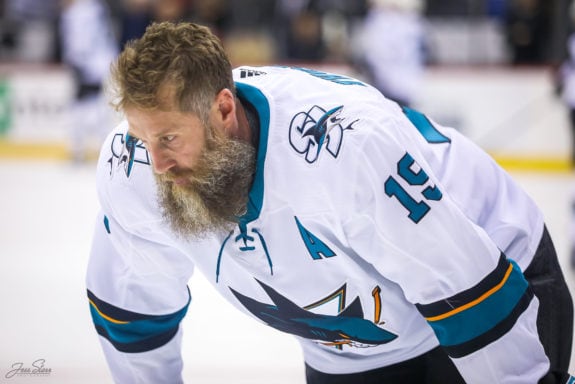
In 2019-20, Thornton regressed further and Dylan Gambrell was not ready for the role. In 2020-21, Gambrell did not impress much in terms of offensive ability. In 2018-19, Thornton really added to the bottom six, and had a .7 point-per-game scoring rate. Compared to Gambrell’s rate of .24 this season, it’s easy to see why the bottom six struggled to add offense at even strength.
Power Play with Little Power
The Sharks are tied for the third-worst power play in the NHL. As mentioned, the team does not possess an elite player like Nathan MacKinnon or Connor McDavid, which really helps special teams scoring. However, the personnel that coach Bob Boughner ran with on the power play, and the play styles the team often used, made little sense and were largely ineffective.
Brent Burns is not Alex Ovechkin. However, the Sharks at the start of the season, and somewhat recently, opted to use both Burns and Erik Karlsson on the top power-play unit, and have Burns launch one-timers from the left faceoff dot. The Sharks tried this strategy in prior seasons; however, it did not work then and continues not to work now.
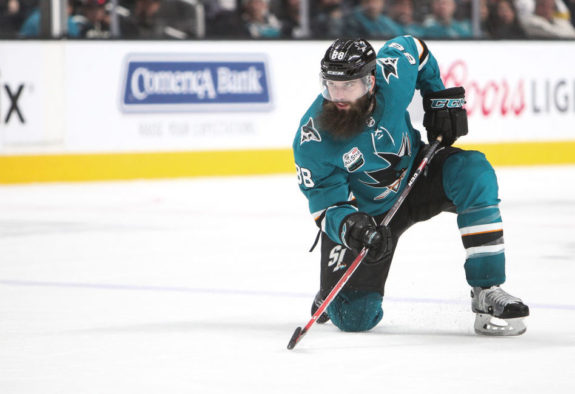
The strategy is very one dimensional. Burns had two power-play goals this season, and only one came from this specific tactic. In fact, Burns has not scored a one-timed shot from the strategy the Washington Capitals use since Jan. 18. More often than not, the shot goes wide and is often cleared. It also places the power-play quarterback, Karlsson, in a tough spot.
The penalty kill only has four players, so when Burns is insistent on taking an incredibly low-percentage shot, the opposing team has no reason to mark him. Karlsson has two options: pass to Burns who has a high percentage of shooting it wide and have the puck cleared, or focus on the other half of the ice where players are much more covered by the defense. This strategy does not fit San Jose’s personnel.
And, when the power-play unit consists of four forwards and one defenseman, it is still not spectacular. The Sharks came into the season wanting to implement a power play similar to the Boston Bruins, who often score on the rush. As Labanc said ahead of the season, Boston is “one of the best scoring off the rush on the power play, so we kind of want to implement their game to ours and get that speed coming into the zone.”
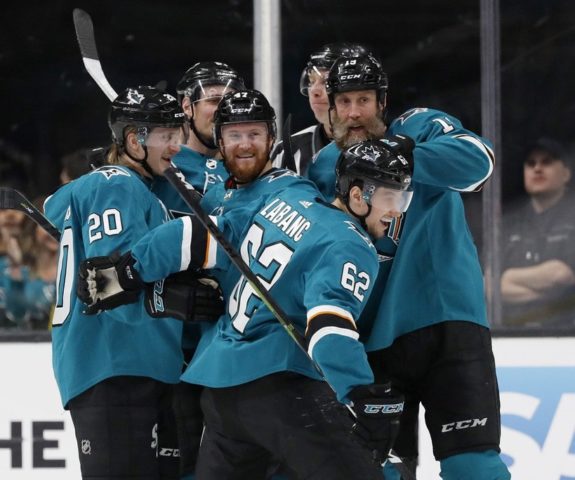
However, San Jose does not do that at all. The Sharks use a drop pass in the neutral zone and while the forward can often enter the zone successfully, the team rarely gains a rush opportunity from the entry. With a typical four forward and one defenseman umbrella power play, the team looks their best, but are still underwhelming. The Sharks in 2018-19 possessed the sixth-best power play, and have regressed mightily to where they are now.
Defensive Woes and Rough Goaltending
In recent history, the Sharks haven’t been a stellar defensive team, or had a sensational goaltender. Previously, they never needed it, because they had elite offense to out-score their flaws often times. However, without large offensive producers such as Pavelski and Donskoi, the team needed to be better defensively the last two seasons and was not.
Marc-Edouard Vlasic, Burns, and Karlsson are paid to be elite defenseman. However, not only do their large salaries make it difficult to sign defensively solid blueliners, but they all have regressed from elite status and are not to the standard the Sharks need and expect.
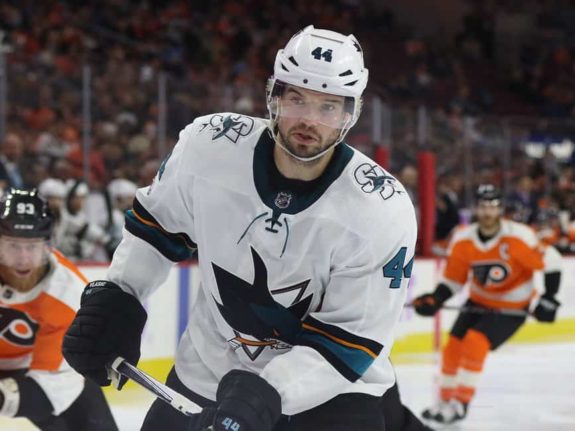
Of pairings that have played at least 50 minutes at even strength, there are two that averaged 1.3 expected goals against per 60 minutes (xGoals Against/60). These pairings were Radim Simek with Nikolai Knyzhov, and Vlasic with Knyzhov. This success was largely due to quality of competition, as these were usually third pairings that were utilized in defending the worst lines of the opposition.
Vlasic took another step down this season. His pairings with Burns and Karlsson are the two worst defensive pairings the Sharks have had this season, each averaging in the area of three xGoals Against/60. His 42 percent control of shot attempts (Corsi%) is worst on the team.
Karlsson was actually the only Sharks blueliner with a positive Corsi%, rocking a 52 percent so far this season. However, of the defensive pairings the team currently runs, his pairing with Knyzhov is the worst. They control just 44 percent of expected goals when on the ice. Given Karlsson’s lacking offensive production this year, partly due to the ineffective power play, his defensive play is not up to the standard the team desires.
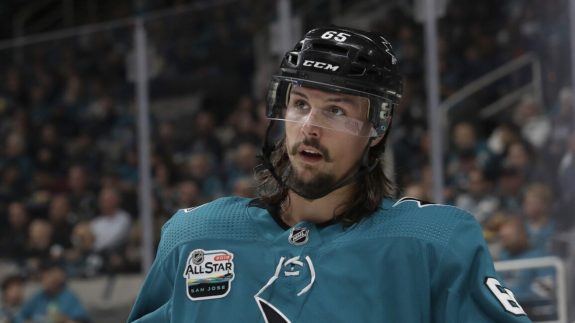
Burns has been stapled to Mario Ferraro nearly all season. That pairing controls 50.5 percent of expected goals, so a pretty average top pair. Burns still often gives away the puck in the defensive zone, or makes incorrect reads; however, this season he improved greatly from 2019-20 where he was one of the worst defensive players on the team.
And, when the Sharks needed a save from their netminder this season, Jones has not been there. This season he has a .896 save percentage, which has been his exact number the previous two seasons. This total is largely inflated from an incredible run of form he had in March. Outside that month, he’s been worse than the last two regular seasons.
He’s also been pulled seven times, setting a career high in a shortened season. With Devan Dubnyk traded and the backup options for San Jose currently being young and developing, the Sharks have no margin for error defensively because its unlikely their goaltender can bail them out.
Fixing the Sharks
Well, fixing the Sharks will be the talk of the offseason. Doug Wilson’s future as general manager could come down to how the team responds next season. This offseason will be critical. Will the Sharks opt to try to improve and return to the postseason in 2021-22, or will they fully embrace a rebuild?
It’s impossible to tell as of now, however the Sharks have clear holes to fill regardless of direction. The team needs a long-term solution in net, and needs to determine if that is via one of their current prospects, a free agency signing, or a 2021 draft pick.
The team also needs to bank on Knyzhov and Ferraro developing into quality shutdown defensemen. Both have been huge surprises this season, taking on top-four defenseman roles, but they need to further improve for the Sharks to become better on the back end.

In addition, the Sharks need to score. Kane and Hertl have been great offensively as the season winds down, but after them, the team has regressed, including young wingers like Labanc and Meier producing well under what’s expected. They must develop or acquire a quality top six, and have scoring depth in order to regain status as a playoff team.